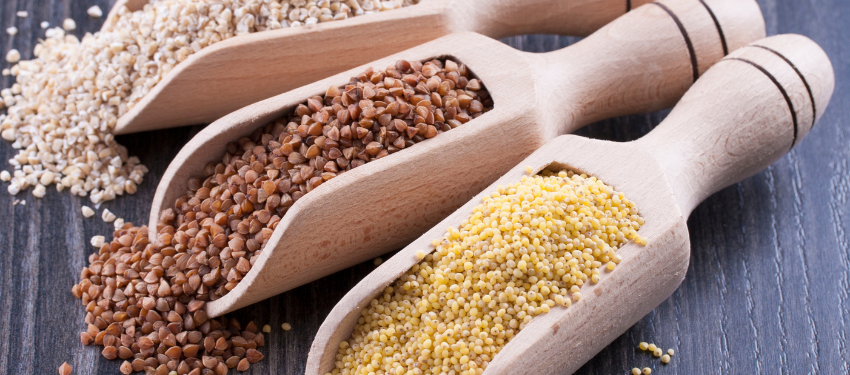Embrace Nutrient-Rich Variety: Make Healthy Millets a Staple on Your Plate

Engaging in a conversation with Ashim Sanyal, the CEO of Consumer Voice, he sheds light on the significant uptake of millets by food and beverage producers in India. Sanyal underscores the need for a cautious approach, urging the preservation of the nutritional potency of coarse cereals. He emphasizes this imperative step to safeguard against the potential disruption of our diets by the surge of heavily processed millets.
Millets belong to the family of cereals, but because of their coarse texture, they were often seen as playing a second fiddle to their rich cousins, rice and wheat. Millets are more resilient to water scarcity and can thrive in semi-arid regions, making them a sustainable choice for Indian agriculture. Millets have been in vogue since the Indus Valley civilization. They find mention in the Yajurveda too. Economic benefits of millets are obvious — they are cheaper to grow and store. These hardy crops are drought-resistant and require very less water to grow. Some can grow on their own as weeds, even in rocky terrains. Rice, in comparison, guzzles water, while wheat too needs far more water than a millet crop. Millets also don’t require expensive fertilizers and pesticides.
To promote millets in restaurants and hotels, the Ministry of Tourism is taking several steps such as establishment of millet experience centres, creating awareness on health benefits about dishes made out of millets amongst Indian and International chefs, meetings with hotel associations and hotel chains. Ministry of Food Processing Industries (MoFPI) has implemented the Production Linked Incentive Scheme for Food Processing Industry for Millet-based products (PLISMBP) during 2022-23 to 2026-27 with an outlay of Rs. 800 crores.
Is nutrition content in millets in danger of being misused?
All good for this neglected produce in the Year of the Millet. However handing over a nutritious product basket ( Millets have many, many varieties ) to companies on a platter spells danger of misuse of the basic nutritional factors of millets as we have noticed classic dangerous transformation of such healthy diets into Ultra Processed Foods by brands killing all or most of the nutritional elements for enhanced taste, flavour, colour, shelf life and child attraction which will do away with the ultimate expected gains of this being a health master. That is why the most successful grains of our times are rice and wheat. They triumphed chiefly because their modern varieties are tasty; also, they can be consumed in polished, refined forms without the inconvenience of chewing on a class of indigestible carbohydrates known as fibre.
The world has always demonstrated that between taste and health, people will talk more about what is healthy and then eat what is tasty. This is bound to be exploited by the industry in case of millets too with added sugar, salt or saturated fats to suit consumers’ pallets adding to the already surging Non-Communicable Diseases. By converting them as Ultra Processed Foods, the danger levels of NCDs as unhealthy foods will mount on unsuspecting consumers that “they are having millets as healthy foods”. Millets will survive with the grand push, of course, but in a niche market as unhealthy Ultra Processed Foods.
Is the food industry adopting millets the right way?
Food and beverage producers in India are adopting millets in a big way. You can find millets in a range of products, from biscuits to beer. From packaged foods to breweries to restaurants, large companies are putting up ambitious plans to introduce millet-based packaged foods, beers and restaurant menus or boost their existing millet portfolios. Products include millet noodles, millet cookies, millet namkeen and millet pasta.
In fact, the glorification of millets as a healthy alternative to rice and wheat will inspire the broader market to corrupt these ancient grains. For instance, the readymade ragi, jowar, bajra dosa, paratha, dalia, khichdi, poha, upma or even atta, etc. of the future will be more rice and sugar than the millets itself in their Ultra Processed form. This is typically what is being done by brands now. Add a small percentage of healthy millet, load it with maida and sugar and name it superfood. Imagine a sugary juice or an aerated sugary drink with a miniscule morsel of millet will become a good food officially. Immediate examples which we will be savouring soon can be expected to be our daily bread or cornflakes or poha or pundhi or even cakes with a Front of Pack Label claims of Ragi or Jowar or Bajra Healthy – “Gluten free healthy super start of the day” claims with 5 or 6 gms by weight of the millet! After all, laboratories can produce anything to induce your taste buds.
Serve the world a health basket of millets!
Food processing companies have started incorporating millets into a wide range of products, from snacks and breakfast cereals to baked goods and ready-to-eat meals. Besides, the government has included millets in the Public Distribution System and the Mid-Day Meal Schemes in schools. No doubt our Prime Minister needs to be applauded for promoting sustainable diet and consumption globally. Besides his recognition of India’s capacity to serve the world with millet baskets will boost our exports and economy. However, we have to recognize that in this era of Non-Communicable Diseases, the corporate houses and brands have to be cautioned not to mislead the consumers with misleading claims / advertising of millet magic and make millets a truly healthy option.
(The writer is Chief Executive Officer (CEO), Consumer VOICE. Views expressed are personal)
